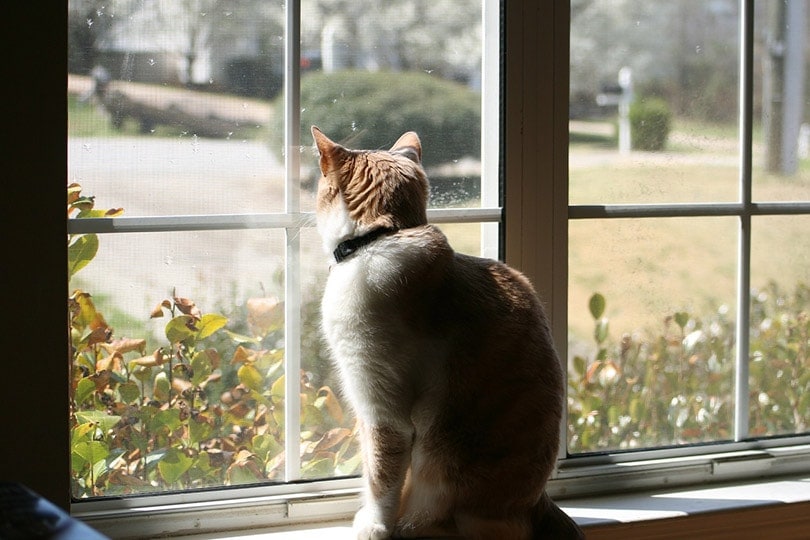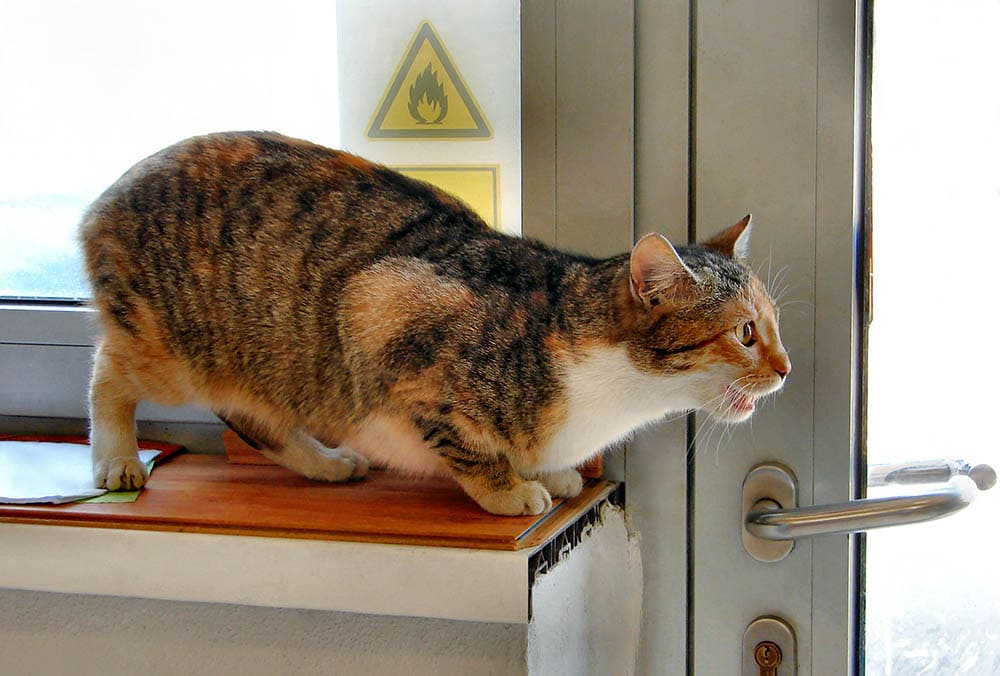Can Cats Eat Radishes? Vet-Reviewed Health & Safety Guide

Updated on
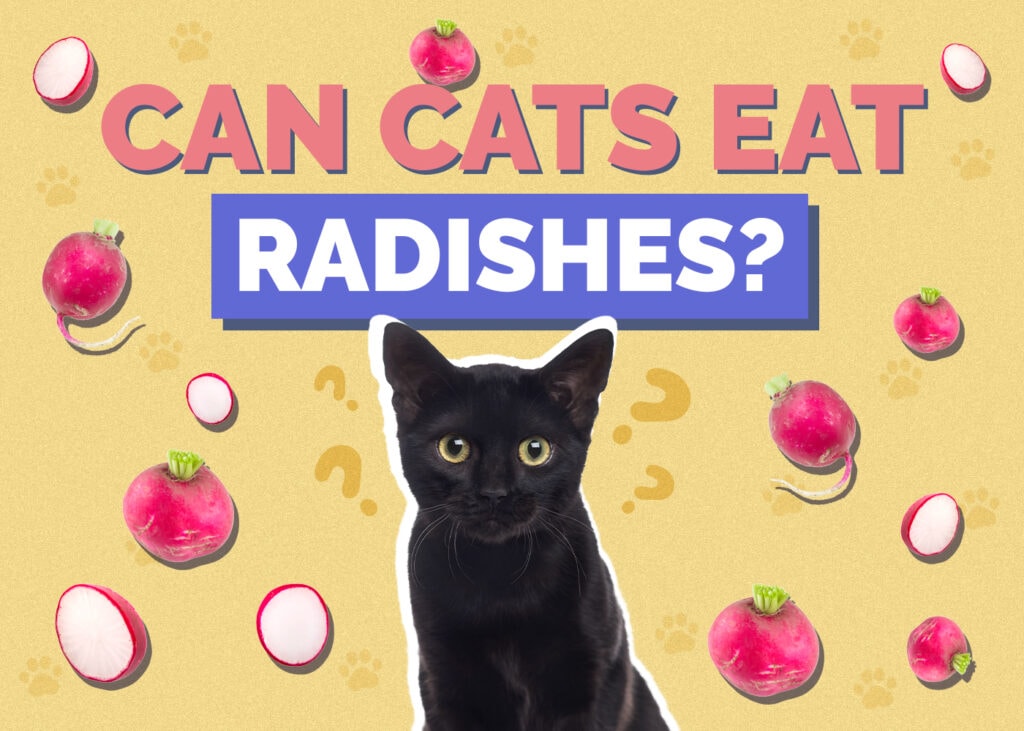
Cat owners know that cats can be very inquisitive and find a way to get into everything. If you’ve left your cat unattended with radishes on your kitchen counter, and your cat takes a bite of the root, you don’t have to worry too much. Radishes aren’t toxic to cats, so there isn’t any medical emergency that you have to worry about if your cat grabs a bite.
However, it’s not recommended to consistently feed your cat radishes because most cats don’t have a positive reaction when they eat them. So, before you give your cat a radish, make sure that you have all the information you need to know about this vegetable.
Cats And Radishes: Friends or Foes?
There are many different kinds of radishes, but the most common varieties you’ll find in grocery stores are red radishes, easter egg radishes, and daikon radishes. All varieties don’t contain any toxins that are harmful to cats.
Radishes are very nutritious and even contain some essential vitamins and minerals. However, there have not been any scientific studies to evaluate the bioavailability of these nutrients in cats:
- Riboflavin
- Niacin
- Thiamine
- Calcium
- Potassium
- Iron
- Manganese
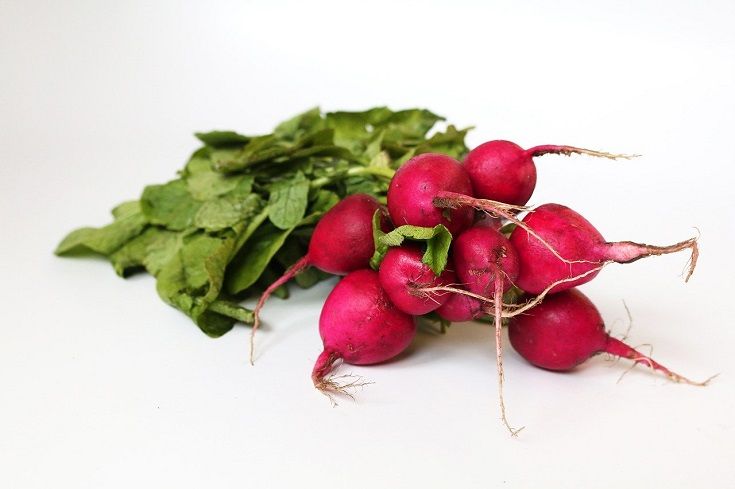
Although radishes contain a lot of important nutrients, they may not be the best vegetable to feed your cat. Most cats tend to experience digestive issues and gastrointestinal discomfort if they consume this veggie in larger quantities. So, if your cat eats a radish, make sure to look for the following symptoms:
- Vomiting
- Diarrhea
- Increased thirst
- Decreased appetite
- Lethargy
- Licking lips
- Nausea
- Abdominal pain
If your cat shows signs of gastrointestinal distress, make sure to keep it in a safe space where they have easy access to water and can’t bump into hard or sharp objects. Monitor its behavior and if symptoms persist for more than a couple of days, seek professional veterinary care.
Can Cats Eat Radish Leaves?
Fortunately, no part of the radish is toxic to cats, including the leaves. So, if your curious cat sneaks a bite from a radish leaf in your garden or groceries, you don’t have to worry too much. However, just like the root, the leaves may cause an upset stomach.
Some radish leaves can have a mildly peppery taste, which most cats do not find palatable. Fortunately, radish leaves have a slightly bitter taste that can be off-putting for cats, so it’s unlikely that they’ll take a second bite.
If your cat eats a piece of a radish leaf, monitor its behavior and look for symptoms, just like you would after your cat eats a radish root.
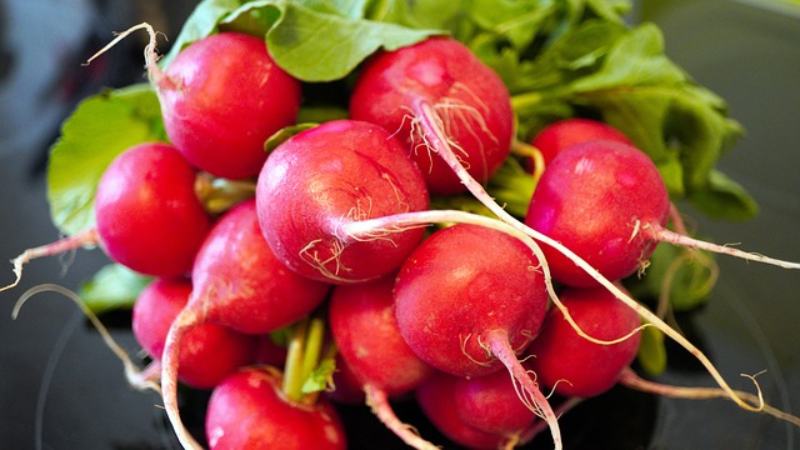
Vegetables That Are Unsafe for Cats
You don’t have to worry too much about radishes, but there are certainly other vegetables that are toxic to cats. Here are some vegetables that cats should avoid.
Onions
Onions and all plants in the amaryllis family are unsafe for cats to eat. This includes garlic, chives, and shallots.
Consuming too many onions can lead to hemolysis, which is a breakdown of red blood cells. This can lead to anemia and weakness until your cat reaches fatal consequences.
Raw Potatoes
Green and raw potatoes and uncooked potato peels are unsafe for cats because they can contain solanine, which is toxic to cats. Some vegetable peels contain solanine, which is a natural pesticide.
When cats ingest too much solanine, they’ll have stomach issues, diarrhea, and vomiting. They can also experience disorientation and lethargy.
Keep in mind that many cat foods contain potatoes. When potatoes are prepared properly, the solanine gets cooked down. So, they’re completely safe for cats to eat.
Green Tomatoes
Green tomatoes also contain solanine, and both the fruit and the vine are unsafe for cats to eat. Once tomatoes fully ripen, they become safe for cats to eat. So, if you see tomato pomace in your cat’s food, you don’t have to worry too much about it.
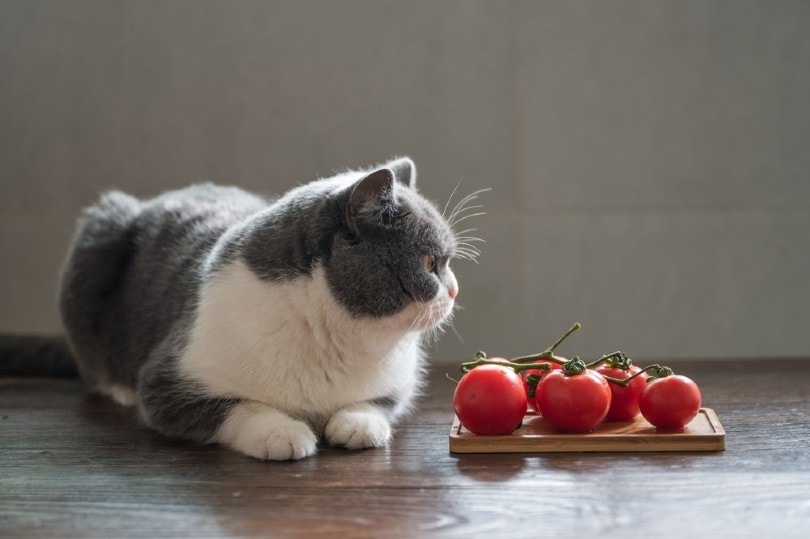
Vegetables That Are Safe for Cats
Although cats have difficulty digesting radishes, they can still have plenty of different kinds of vegetables. Here are some vegetables that are safe for cats to eat:
Cats can also eat some herbs:
- Bee balm
- Chamomile
- Dill
- Lavender
- Licorice root
- Dandelion root
- Verbena
- Peppermint
- Rosemary
- Sage
- Thyme
Cat’s Diet and Nutrition
A cat doesn’t need to eat too many vegetables. They’re obligate carnivores, so they need high-protein diets with moderate amounts of fat and low amounts of carbohydrates. A healthy diet will consist of about 26%-40% protein and 20%-24% fat.
High-quality cat food will provide adequate portions of macronutrients for cats, and they’re more reliable than homemade meals because they’re enriched with essential vitamins and minerals.
The best way to find a healthy diet and food portions for your cat is to work with your veterinarian. This will take a lot of guesswork out of the process, and you’ll receive expert advice on your cat’s diet and nutritional needs.
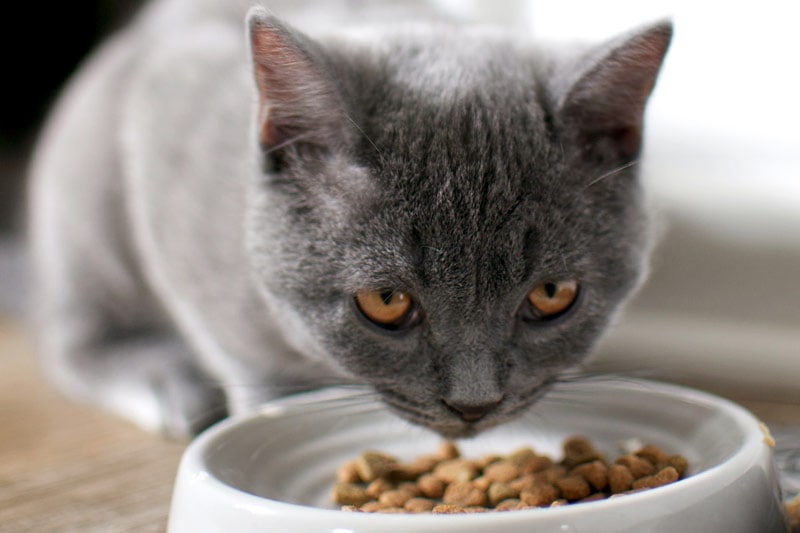
Final Thoughts
Radishes aren’t toxic to cats, but most cats will experience an upset stomach or digestive issues if they eat them. There are safer alternatives that you can give your cat that won’t cause any medical issues for your cat.
See also:
- Can Cats Drink Sparkling Water? What You Need to Know
- Can Cats Eat Ramen Noodles? What You Need to Know
Featured Image Credit: stevepb, Pixabay



